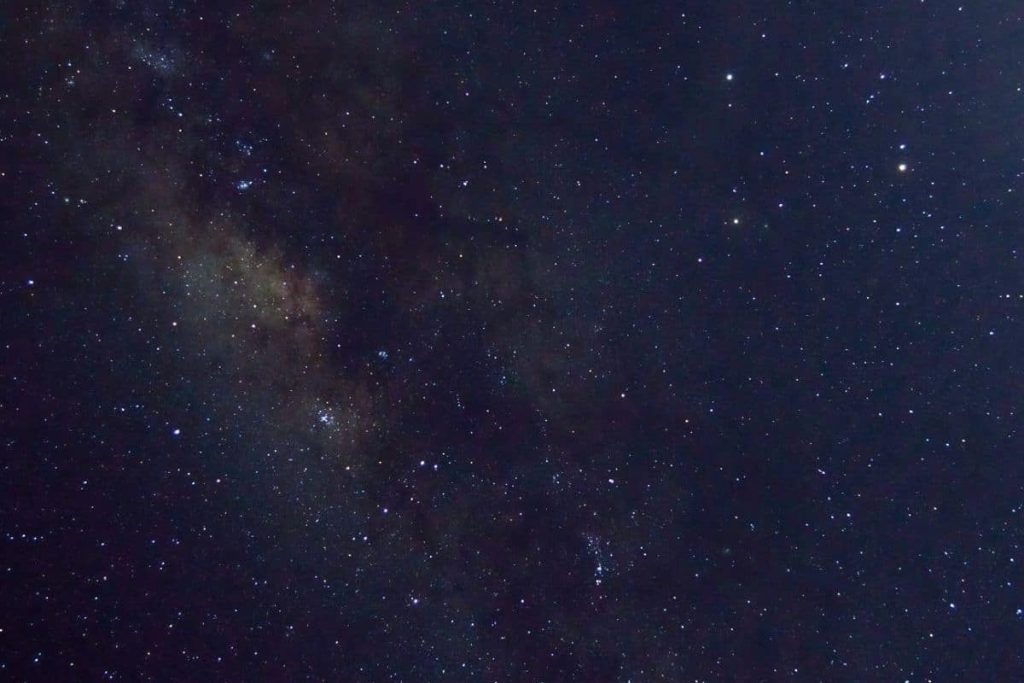AGC 114905 is slowly threatening to turn into a headache file.
It has long been believed that without dark matter there would be no galaxies. No wonder astronomers were shocked to find six dark-matter-poor galaxies in 2019. It was a truly remarkable find – if not theoretically impossible. Some astronomers did not believe that. They advised researchers to take a closer look at galaxies, because dark matter must be found somewhere around those galaxies. Its attraction has fallen on deaf ears, as researchers have now carefully examined one of those six galaxies. with help from very large array In New Mexico measurements were taken for 40 hours. But again, no trace of dark matter was found, the researchers wrote in the journal Monthly Notices of the Royal Astronomical Society.
AGC 114905
The research article is about AGC 114905, a so-called super-dwarf galaxy. Although the name suggests otherwise, the galaxy is not very small; It could rival our own Milky Way. The reason it is still referred to as a dwarf galaxy is that it contains about 1,000 times fewer stars. The result is a faint (extremely diffuse) galaxy.
Rich in dark matter… or not?
The prevailing idea is that all galaxies contain dark matter. But super-diffused dwarf galaxies like AGC 114905 cannot do without it (see box).
Galaxies rotate very quickly. It’s actually very fast, researchers have argued in the past. The gravity of the visible matter of which these galaxies are composed is not strong enough to hold such a fast-moving galaxy together. However, these galaxies do not collapse. how is that possible? To solve this problem, researchers came up with dark matter. This form of matter is invisible, but at the same time indispensable: it is the “super glue” that holds galaxies, but also galaxy clusters together. This “super glue” is indispensable, especially in highly diffuse dwarf galaxies of relatively little mass.
However, in 2019, researchers determined that there is no dark matter in AGC 114905. New measurements confirm this remarkable conclusion.
new measurements
The researchers observed the gas rotation of AGC 114905 for 40 hours. Based on their observations, they made a graph in which they plotted the distance of the gas from the center of the galaxy on the x axis and the speed of rotation on the y – gas axis. Normally, such a graph quickly reveals that the galaxy contains hidden matter (i.e. dark). But in the case of AGC 114905 it was different; It turns out that the rotational speed of the gas can be fully explained by the visible matter. With this, everything indicates that AGC 114905 does not contain dark matter.
The theory and practice diverge
“This is of course what we had thought and hoped for, because it confirms our previous measurements,” says Pavel Mancera Peña, a researcher at the University of Groningen & Astron. “Yes, the problem now remains that theory predicts that there must be dark matter in AGC 114905, but our observations say it doesn’t.”
Lost?
Could it be that AGC 114905 once contained dark matter, but somehow lost it? Researchers do not think so. In theory, nearby galaxies could have cleared AGC 114905 of dark matter. However, there is one problem: there are no galaxies nearby.
arm fight
Is this fixed then? Is AGC 114905 dark matter really poor? Researchers should be careful. In their study, they made an assumption that might throw a wrench in the works. We’re talking about the estimated angle at which researchers think they see the galaxy. “But,” stresses researcher Tom Osterloo. “This angle of inclination should be very different from our estimate if there is room for dark matter again.”
The case is nibbling. The scholars will not leave him. They are currently studying a second, highly diffuse dwarf galaxy. If further measurements show that dark matter is missing there as well, evidence for the idea that there is simply no dark matter in some galaxies begins to pile up. Because the search for AGC 114905 does not stand alone; A few years ago, a galaxy that barely harbors dark matter was discovered. There was also a lot of work to be done there, but data from the powerful Hubble Space Telescope confirmed the existence of a dark matter-poor galaxy earlier this year. However, Hubble could not give us an explanation for the existence of such galaxies. And that wouldn’t be forthcoming for the time being, even after this new investigation.

“Lifelong entrepreneur. Total writer. Internet ninja. Analyst. Friendly music enthusiast.”











More Stories
This “salt battery” is shipped by sea
The footprints of an overgrown bird of prey have been discovered in China
World of Jazz launching on April 30 – Klassiek Centraal